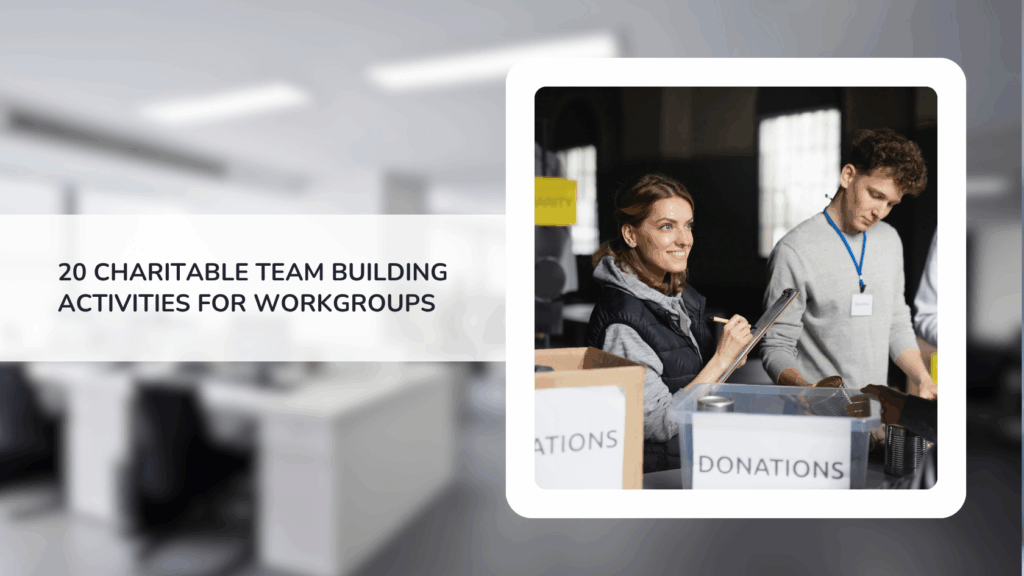
Everyone gets sick, but that isn’t the only cause of people taking sick days. In this guest article, Gael Breton explores the preventable factors that contribute to sickness and absenteeism as well as a few ways that organizations can mitigate them.
We all know the frustration that can come from someone missing work. When managers are gone, the team could run amuck. When key team members are gone, no one knows what to do.
This experience happens to pretty much all of us.
But is there a way to fix it?
The short answer is “no”. People will always call in sick and miss work. However, if you want to know how to make your business more resilient against sickness and absences, we have some tips that might help.
Why Do Employees Miss Work?

Most people know as soon as they wake up whether or not they’re going to call out from work. Some know before they even go to bed.
But it’s not just a physical issue that leads to them doing so. According to one study, more than a third of employees admit to playing hooky, even when they feel fine.
Some workers view sick days as extra vacation days. If they’re going to lose them at the end of the year, then why not get some just take them anyway?
Other employees may be stressed out. In fact, the majority of workers that call in sick when they aren’t ill are overly stressed or experiencing symptoms of burnout.
Stress is even a factor that often causes increased employee turnover, with staff leaving for “greener pastures.”
As an employer, employees being sick is beyond your control. But you can do something to help reduce their stress and, in turn, to drive down absenteeism.
Here are a few considerations to make.
Your Workplace Could be Toxic
No one wants to think of employees as bad or good. But sometimes good people are capable of bad things. On top of this, toxicity has a tendency to spread to other employees and entire departments.
It’s up to you as a manager, owner, or CEO to help create a positive work environment. You have to be the seed that allows your company to grow. This includes happy employees.
There are several ways members of upper management can help generate positivity.
4 Tips for Building a Happy Workplace

1. Create a comfortable place to work
This, of course, includes physically comfortable environments, but also mentally. If people are comfortable, their stress levels are lowered. They are in less physical pain. If people have fewer reasons to call in sick, then they’ll call in sick less often.
2. Promote a healthy lifestyle
If you want to keep top talent in your business, you need to be unique. This doesn’t necessarily have to do with the paycheck. Put an emphasis on employee perks that keep your team happy and healthy.
If you can’t afford a gym on-site, maybe you can get employees a discount at the closest gym to your facility. Employees understand that money can be tight, especially with small businesses and startups.
Going out of your way to get discounts as part of your perk plan says a lot about an employer. Every penny counts. Even more so when children are involved.
3. Encourage your teams to prioritize self-care and check in with your teams regularly
Connect with them. Ask how they’re doing, what challenges they’re facing, and offer help. Don’t just look at your teams as teams, but as communities. You’re a part of that community too.
You’re only going to be as strong as your weakest link. Instead of punishing weaker members, find out why their performance isn’t ideal. Encourage stronger members to help out. It’s possible your weaker members have yet to show their true strengths.
4. Give your employees someone to talk to
My job is…not traditional. Neither is my schedule. Friends and family who have traditional jobs often reach out to me. I used to think this was for advice. It isn’t.
They just want someone to listen to them. They need to vent, and they know speaking their mind to co-workers and management can be problematic. Now, I just listen to them, encourage them to meditate on it, and let them go their own way.
Usually, I follow up after a week or two to see how they’re doing. Most of them are fine and just needed to chat with someone who wasn’t involved in the situation.
5 Ways to Make your Business More Resilient Against Sickness and Absences

Absences and illness don’t just affect large corporations. They can also hit small businesses and entrepreneurs pretty hard. So, it’s important to have as many fail-safes as possible.
Let’s say you just released a course on the best affiliate programs for beginners. Come launch day, your Pinterest marketer no-shows, and your best writer misses his deadline. This is a potential worst-case scenario.
The key is to have systems in place to prevent this from happening. Here’s how you can do that.
1. Cross-train Effectively
Having one person who does one job may seem like a good idea. If something goes wrong, you know exactly whose door you need to go knock on.
But what happens when this person is out for a legitimate reason?
Fix this problem by cross-training people to do other jobs. As an example, let’s say you have a five-person team.
Each person should be responsible for their own work, but everyone should be trained to pivot and help out if someone else isn’t around.
I like to look at this from a sports perspective. In the event of a fast break in sports such as hockey or lacrosse, the offense has an advantage. The defense is a man down. One defender slides up to take on the direct threat while others slide to secondary threats as needed.
This isn’t something a hockey player knows from the second they put on skates. It is practiced. Usually to exhaustion. This is exactly how your workplace team should handle the situation.
If everyone works together on projects, then they can pivot when they’re a man down to handle increased workloads to the best of their ability.
Another way you can handle this is to split the workload between the five team members. Give a chunk to the four members who are working. Encourage them to communicate with each other to help solve problems.
Let your employees know from the time they’re hired that your teams have each other’s backs. Don’t make them feel obligated to come to work when they’re ill and possibly contagious. Ensure them that the work will get done no matter what.
Looking for a good opportunity to cross-train your employees? You might want to consider making it the topic of a lunch and learn for your team.
2. Develop an SOP Plan
SOP stands for Standard Operating Procedure. One way your business can adjust to people being absent from work is by making part of their job to help other people do their job when they are out of the office and unable to work with step by step guides.
Back in the day, this was usually a printout. No one looked at it unless they were a fresh hire. People would occasionally make handwritten edits and after a couple of years, the packet was an illegible mess.
Then one day someone would get so frustrated they would type up a new copy, print it out, and it would sit unused in a drawer until a new person was hired.
Now, we have software that keeps your SOPs or “wiki tools” as some folks are calling them. Some software is dedicated to this feature, such as Notion and Slab. Some project management software, like ClickUp, is adding the feature as well.
Have your employees work on the SOP of their tasks and duties regularly. Just a few minutes a day if that’s all they can spare.
Eventually, you will have a full list of helpful information to teach new employees how to do a job as well as experienced co-workers who are trying to pick up the slack for someone who is absent.
Each SOP should have a similar setup, so every employee knows what to look for:
- Purpose: Why are you creating this SOP? Why does it matter and how does it affect the business and the employee?
- Procedure: Lay this out in outline form, step by step
- FAQ: If this happens, then do that. Think of every possible scenario and how someone can fix it
3. Clean your Office
Living in the world of COVID, keeping a clean office is more important than ever. Some employees may not want to come back to work. They don’t want to be around people who could get them sick with something they could carry home to their families.
Come up with a plan to keep your office clean.
This could be as simple as hiring a cleaning service.
But if you want to encourage team building, then there are some fun ways to get your employees in on the action.
Offer overtime pay
If you don’t want to hire a cleaning service, offer financial incentives to get employees to pick up after themselves and stay after work to properly disinfect the office.
Have a Party
Who doesn’t enjoy some friendly competition? Have teams be responsible for cleaning. One team handles the first week, another second, and so forth. Whichever team does the best job gets a party, free massages, and things of this nature.
It really doesn’t matter what the reward is as long as it’s something people want.
Your main goal is to prove your office is safe and clean for your employees. If none of these ideas pique your interest, then maybe you consider allowing your teams to work remotely.
4. Offer Remote Work

Working from home should be a consideration for your employees. With the emergence of software like Zoom, Slack, Asana, and others, it’s easier than ever for your employees to be productive without being in the office.
I’ve talked about stress, cleanliness, toxic workplaces, and more in this post. Allowing remote work is a one-size-fits-all approach to many of these potential problems.
One of the biggest concerns is whether or not teams can be productive while working from home. According to a report from Bloomberg, they can be even more productive than they were in the office.
From the second someone wakes up in the morning, they’re hit with a variety of stressors from different sources. The first is the alarm clock. There is a bit of a snowball effect from there.
If you want your team to produce high-quality work, then removing stressors is a step in the right direction. They don’t have to scramble to get ready. They don’t have to fight traffic. They won’t spend half the morning wondering where they’re going to eat for lunch.
5. Celebrate Small Victories
Despite perks that make most of our jaws hit the floor, young people leave tech jobs. The six-figure-a-year salary isn’t enough. The free meals, massages, and sweet perks just don’t cut it after a while.
One of the biggest gripes was how projects were handled. As soon as a project was finished, another one started. There was no downtime. There was no recognition. There was just work directly followed by more work.
If you want to keep your employees from burning out, take a little time to throw out some recognition. It can be a party, team event, or happy hour. It doesn’t matter.
People need a work-life balance. They want contentment more than money. Many people are willing to give up a big paycheck to reduce stress and live the lifestyle they want.
No matter what you do, it’s up to your employees to come to work. Focus on hiring the right people for the right jobs and you’ll see a boost in performance, productivity, and reduced missed workdays.
Put systems into place that will help employees pick up slack when it’s needed.
Use project management software wisely to keep your remote workforce productive without micromanaging. Finally, don’t be a stranger to your employees. Give them a shout every now and again to let them know you care and ask if you can help them with anything.
Learn More About How Team Building and Training Programs Can Help Create a More Positive and Engaging Work Environment for Your Staff
For more information about how to support stronger employee engagement with team building and training, reach out to our Employee Engagement Consultants.
Author Bio:
Gael Breton
Gael is one half of the Authority Hacker Duo. Together with his business partner, they help small businesses create and build online presences which count!



